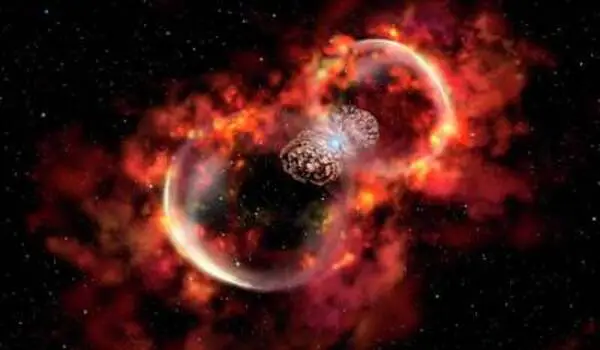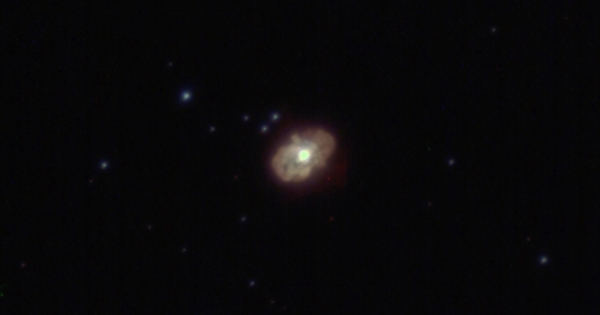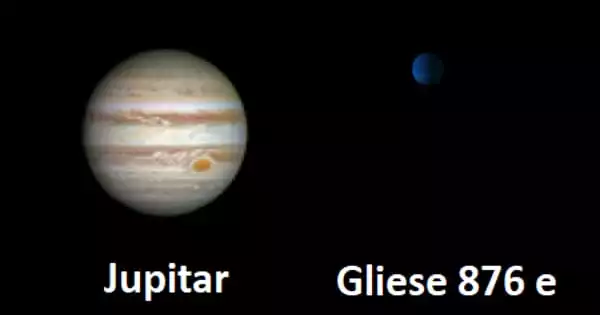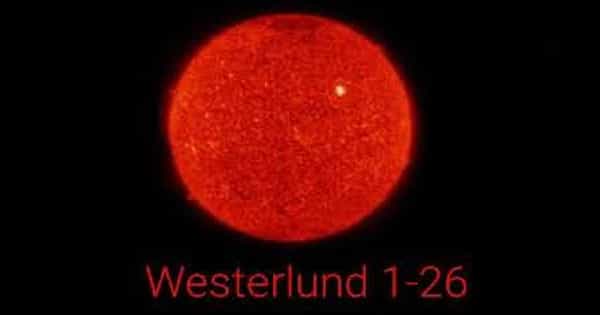The Homunculus Nebula is a bipolar nebula that surrounds the star Eta Carinae, which is located in the Carina constellation about 7,500 light-years away from Earth. The nebula was formed in the mid-1800s when Eta Carinae underwent a massive outburst that ejected about 10 solar masses of material into space.
The Homunculus Nebula is a much smaller feature within the large bright nebula, immediately surrounding Eta Carinae itself (from Latin meaning Little Man). The name “Homunculus” comes from the Latin word for “little man” because the shape of the nebula resembles a figure with outstretched arms. The nebula is about 10 times larger than our Solar System, with a total mass of about 10 times that of the Sun.
Eta Carinae is a stellar system 7800 lightyears away that is five million times brighter than the Sun. It was regarded as an unremarkable star by astronomers until 1837, when it began to brighten in an event known as the Great Eruption. It was the second-brightest star in the sky for a brief period in 1843 before fading again.
It is thought to have been ejected in an enormous outburst in 1841, when Eta Carinae briefly became the second-brightest star in the sky. This nebula is a small H II region containing gas that has been shocked into ionized and excited states. It also absorbs and re-radiates much of the light from the extremely bright central stellar system (IR). At mid-IR wavelengths, it is the brightest object in the sky.

The Homunculus is divided into two lobes that are labeled northwest (NW) and southeast (SE) based on their orientation as seen from Earth. Each measures approximately 7′′ wide by 5′′ long. A ragged equatorial skirt of material can also be seen in deep images at certain wavelengths. The lobes are mostly hollow, with material concentrated near the poles.
The material in the equatorial skirt appears to be the same age and younger than the material in the lobes. It is made up of a much smaller mass of material than the lobes, and it shines primarily through reflected light, which escapes most easily at equatorial latitudes. In comparison to the lobes, there is less dust and molecular hydrogen.
Distance
If the Homunculus is axially symmetric, the distance to it can be calculated using its observed angular dimensions and calculated linear size. This method yields the most precise distance of 7,660 ± 160 light-years (2,350 ± 50 pc). The largest radius of the bipolar lobes in this model is about 22,000 AU, and the axis is oriented 41° from the line of sight, or 49° relative to the plane of the sky, which means it, is seen from Earth slightly more “end on” than “side on”.
The Homunculus Nebula emits light in various wavelengths, including X-rays, ultraviolet, visible light, and infrared. The innermost part of the nebula is very hot, with temperatures reaching millions of degrees, and emits X-rays. The outer parts of the nebula are cooler, with temperatures around 10,000 degrees, and emit visible and infrared light.
The Homunculus Nebula is a fascinating object for astronomers to study because it provides insights into the processes of stellar evolution and the final stages of a star’s life.
















